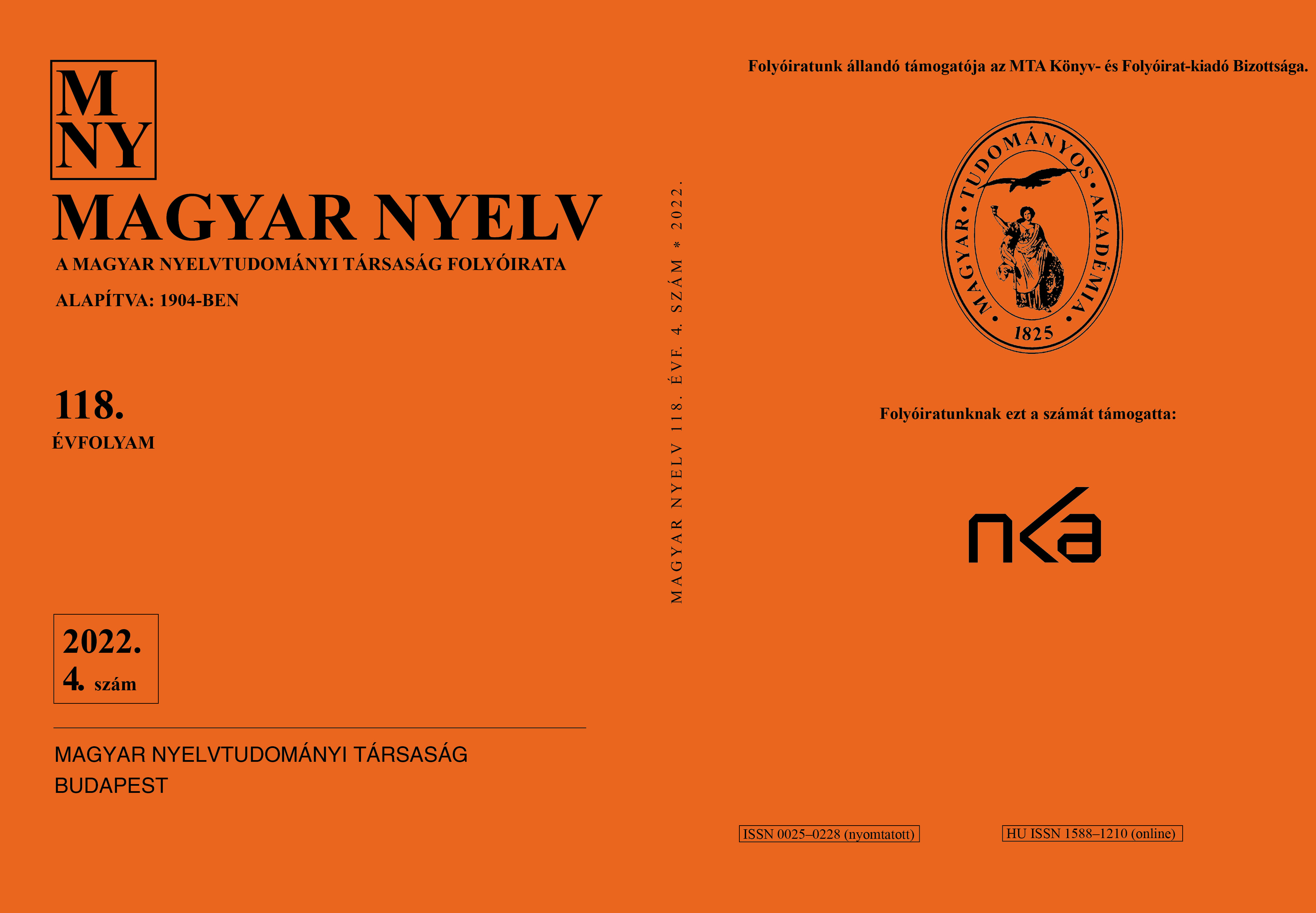St. Stephen’s donation charter of the episcopate of Veszprém as a source of the history of the Hungarian language
Part 2
DOI:
https://doi.org/10.18349/MagyarNyelv.2022.4.444Keywords:
early remnant, early document, deed of foundation of the episcopate of Veszprém, geographical names, historical toponymsAbstract
There are negligible authentic remnants from the early periods of the Hungarian language, because a significant part of the charters did not survive the ages in their original form. However, if an appropriate method is applied to the research of these interpolated charters, it is possible to enrich the field of historical linguistics with valuable new sources. St. Stephen’s donation charter of the episcopate of Veszprém from 1009 survived only in an interpolated form; however, if the remnants are categorized with linguistic analysis in a proper chronological layer, the original charter’s corpus of remnants is possible to be reconstructed by the comparison of transcriptions. The main focus of the paper is the reconstruction of the corpus of remnants of the lost but original charter of St. Stephen, as well as an analysis of the reconstructed data from a morphological, phonemic, and historical orthographic point of view
Downloads
Published
Issue
Section
License
Copyright (c) 2022 Vivien Sarnyai

This work is licensed under a Creative Commons Attribution-NonCommercial-NoDerivatives 4.0 International License.
Magyar Nyelv is a Diamond Open Access periodical. Documents can be freely downloaded and duplicated in an electronic format, and can be used unchanged and with due reference to the original source. Such use must not serve commercial purposes. In the case of any form of dissemination and use, Hungarian Copyright Act LXXVI/1999 and related laws are to be observed. The electronic version of the journal is subject to the regulations of CC BY-NC-ND (Creative Commons – Attribution-NonCommercial-NoDerivatives).
The journal permits its authors, at no cost and without any temporal limitation, to make pre-print copies of their manuscripts publicly available via email or in their own homepage or that of their institution, or in either closed or free-for-all repositories of their institutions/universities, or other non-profit websites, in the form accepted by the journal editor for publication and even containing amendments on the basis of reviewers’ comments. When the authors publicize their papers in this manner, they have to warn their readers that the manuscript at hand is not the final published version of the work. Once the paper has been published in a printed or online form, the authors are allowed (and advised) to use that (post-print) version for the above purposes. In that case, they have to indicate the exact location and other data of the journal publication. The authors retain the copyright of their papers; however, in the case of an occasional secondary publication, the bibliographical data of the first publication have to be included.



